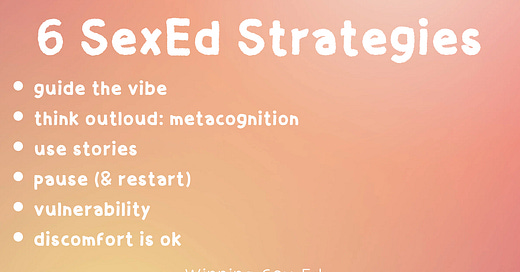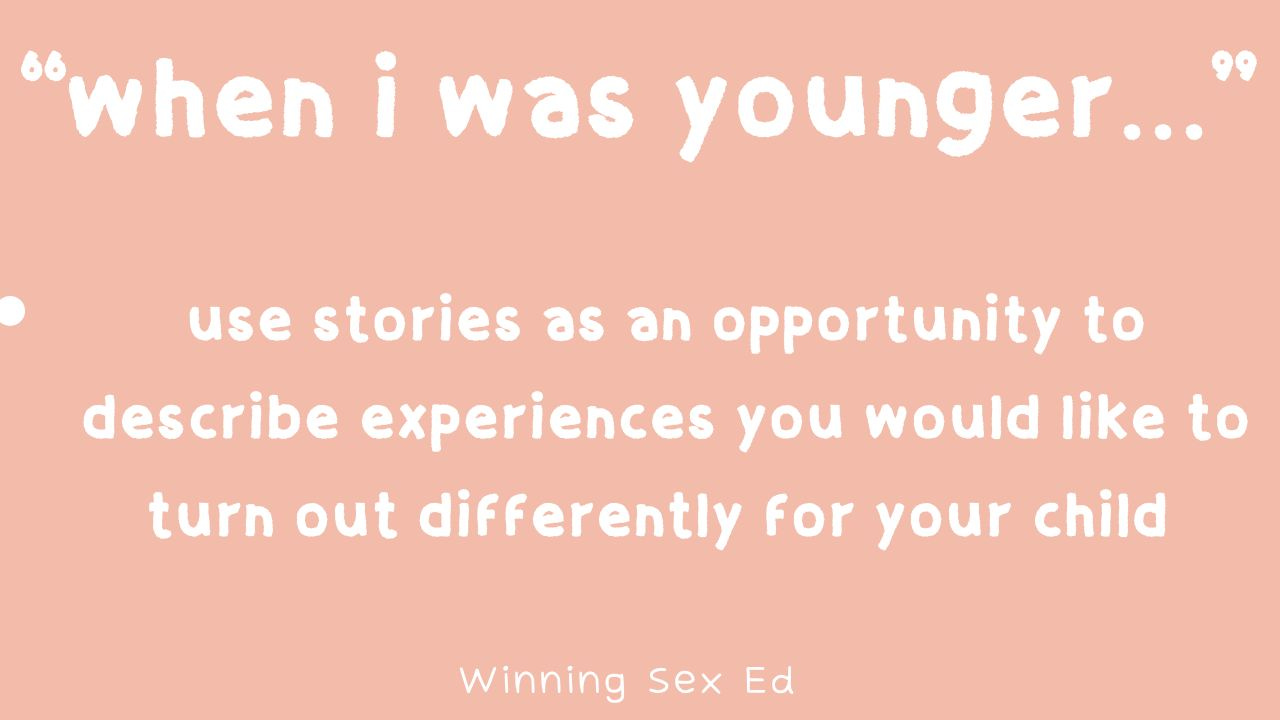Strategies for Approaching Sexual Education Mindfully
Teaching children isn’t just about what you say—it’s about how you say it, how you feel when you say it, and how open you are to learning alongside them. Here are a few key strategies to make your teaching more impactful, whether discussing basic sex anatomy or more complex topics like sexuality
.
1. GUIDE THE VIBE: CHILDREN FEEL YOUR ENERGY
Your nervous system sets the tone. If you’re triggered, overwhelmed, or carrying unprocessed emotions, pause. Your child might not understand your words but will feel your energy. Breathe, reset, and return to the conversation when you’re grounded. A calm presence speaks louder than any lesson plan.
Maybe try a simple mantra. Sometimes, I pump myself up by repeating “talking about sexual health is positive,” or even more simply, I sometimes repeat: “This is healthy. This is healthy. This will empower my child.”
2. METACOGNITION: THINKING OUT LOUD
Children learn by observing how we navigate emotions. They will feel connection and validation if you share your emotional experience. Plus they’ll increase emotional intelligence.
“This is awkward for me, too. My armpits are sweaty, and my voice is quivering. What is it like for you? It will get easier. Can we try to grow more comfortable ~ together?”
If you notice yourself unraveling mid-conversation, own it. Externalizing your thought process models emotional regulation and self-awareness. Try saying:
“For some reason, and I can’t even say why, I just felt a wave of anger/sadness/stress. It’s not your fault at all. I need a moment to sort through my feelings. Can we take a short break and come back to this? Can I give you a hug?”
This simple act teaches children that emotions are natural, manageable, and not something to fear or suppress.
3. USE STORIES
Children love real-life stories. Start with, “When I was younger, this happened…” and watch their eyes widen. These moments bridge the gap between generations and make lessons feel personal, relatable, and memorable. Your lived experiences are some of the most powerful teaching tools you have.
4. PAUSE & REMEMBER TO PRESS PLAY
If you pause a tough conversation, always press play again. If you don’t return to it, your child may believe “pause” means avoidance or dismissal. Following up shows that all feelings and topics—especially the hard ones—are worth revisiting.
5. SHOW VULNERABILITY
Vulnerability isn’t weakness—it’s an invitation for connection. When children see adults openly navigating emotions, they feel safe to do the same. Whether the topic is sex, friendships, or personal challenges, your openness fosters their curiosity and trust.
6. SITTING WITH DISCOMFORT
Discussing certain topics, like sexuality, may bring discomfort. That’s okay. Externalize it. Name it. “This feels awkward for me, but I want to talk about it because it’s important.” With time, the discomfort often fades. And if it doesn’t? You’ve still modeled that tough conversations are worth having.
Reflection: Understanding Your Natural Approach to Sex Ed
If you’re unsure how to approach discussions around sex and relationships, start with these four questions:
What messages did I receive about sex growing up?
How do I want my child to experience these conversations differently (or similarly)?
What parts of this topic make me feel uneasy, and why?
How can I create an open, ongoing dialogue rather than a one-time talk?
Sex ed at home will never be about perfection. HA! Parenting is a lifetime course in “how the F am I supposed to do this!”
Let’s aim for presence, patience, and the courage to keep learning. When in doubt, pause, reflect, and return. Your child will thank you for it.
I thank you for reading. I’m cooking up a lot of ‘stuff’ and look forward to letting you all know about it when it’s ready!
xo
Tara












You are such a good and natural teacher. These strategies work in all ways for conversations. They apply extraordinarily well to conversations about sexual health. Bravo